Welcome to Lamborghini Legends, a series of stories to mark the Italian brand’s 60th anniversary, in which Nik Berg gets behind the wheel of some of Sant’Agata’s all-time greats. Here he discovers why motoring writers of the 1960s had to come up with a whole new category for the Miura.
I have no idea exactly how fast I’m moving along this winding Italian backroad, but I do know that it is fast.

The broken speedometer might actually be a blessing. I’m sure I’d be having second thoughts about pushing the car this hard with the confirmation of a three-digit velocity adding to the seven-digit value attached to this last-of-the-line 1973 Miura SV.
So I shove such concerns to the back of mind. I concentrate instead on savoring every moment of this once-in-a-lifetime drive in what truly is a once-in-a-lifetime automobile.
The Miura is literally the definition of “supercar.” Before Giampaolo Dallara, Paolo Stanzani, and Bob Wallace decided to mount Giotto Bizzarrini’s four-liter V-12 engine transversely, in the middle of a lightweight Lamborghini monocoque, nobody had ever used the word.
When Lamborghini showed the Miura’s rolling chassis at the 1965 Turin Motor show, Italy’s coachbuilders all put in bids to design and craft the bodywork. Pininfarina pitched, but it was Bertone that won with a design that barely changed from first sketch to production.
“I like this one,” declared Ferruccio Lamborghini. “It’ll earn us legendary status.”
He was not wrong.
What Lamborghini and Bertone both got wrong was the number of Miuras the company would make. They estimated that the demand would be for 50 cars over the following five years. The reality was that 763 were be built between 1966 and 1973.
If you include the “unicorns”—the rare, limited-run models—there were six versions of the Miura. Lamborghini built 275 examples of the original P400 in the first three years, before the updated S followed in 1968, featuring a strengthened chassis. Another 338 units were delivered into 1971.
Alongside these, a one-off roadster was developed by Bertone but turned down by Lamborghini for production. The car was sold to the International Lead Zinc Research Organization to showcase its wares.
In 1970, Bob Wallace wanted Lamborghini to go racing. The result was the Miura Jota (pronounced “Yota”) a 430-plus bhp, featherweight track tool that, although tested over some 12,000 miles, never competed. Sold to InterAuto in Brescia, the car was subsequently destroyed by a mechanic who crashed it into the side of bridge. Customers, including the Shah of Persia, got wind of Wallace’s wildest Miura and pestered Lamborghini sufficiently that four “SVJ” models were built.
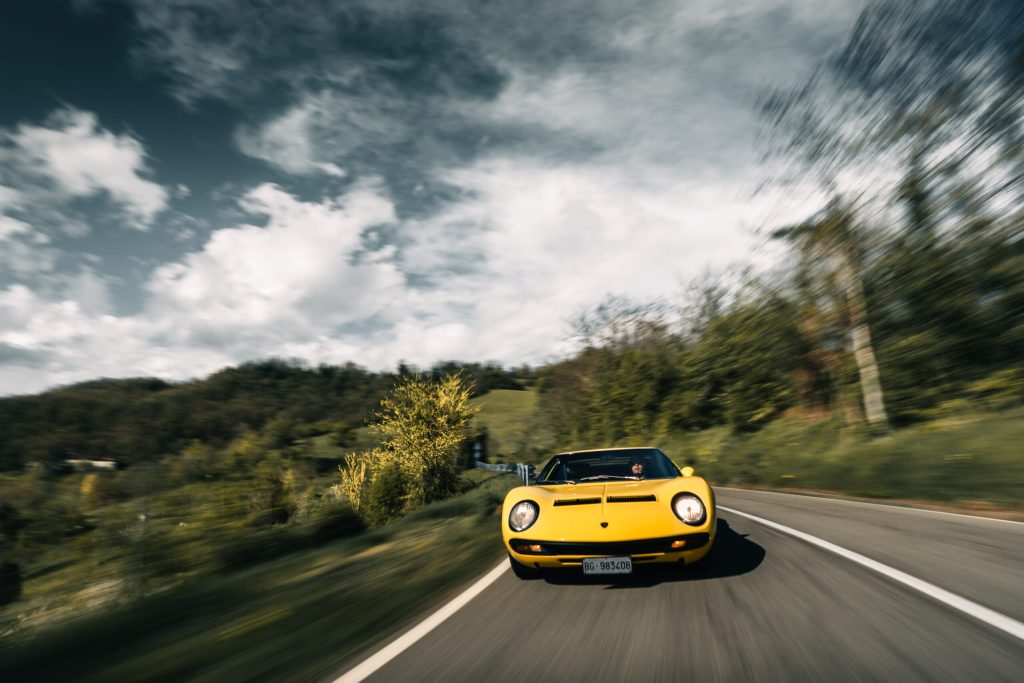
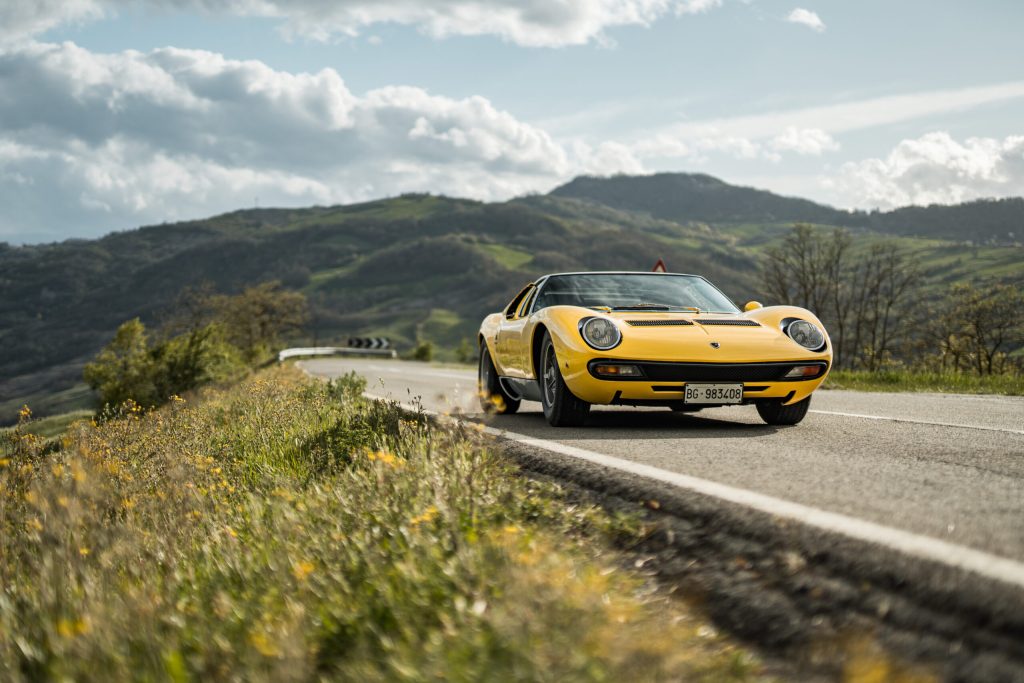
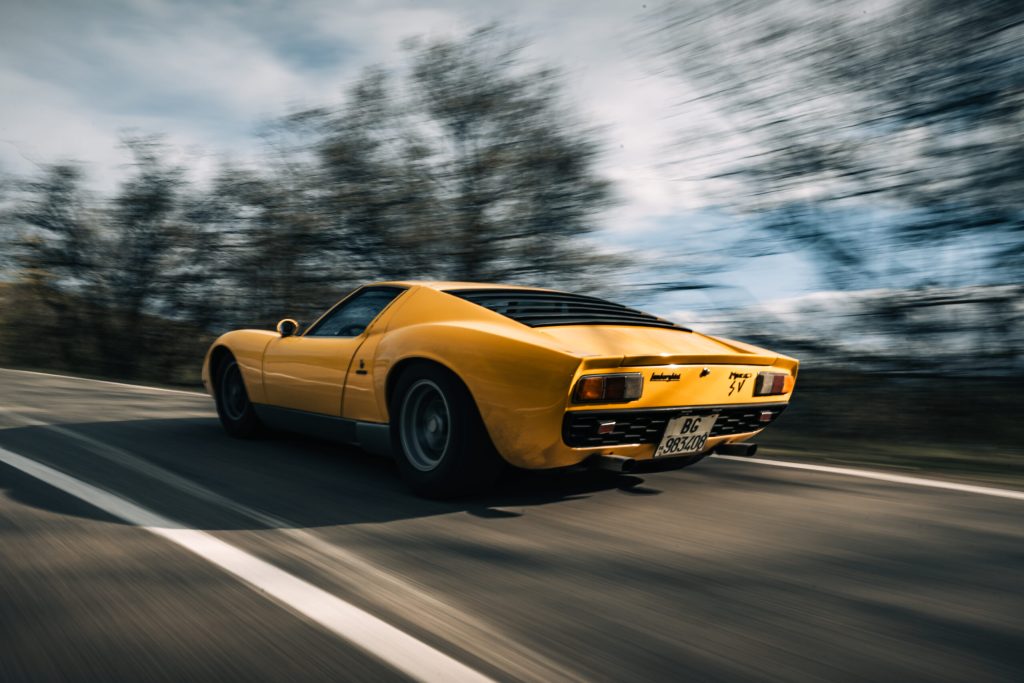
When it comes to series-production Miuras, however, it is the final 150 Super Veloces that are the most super of all, and not just because the badge says so. These SV cars have a more rigid chassis, revised suspension anchor points, and, most notably, a five-inch wider rear track that allows for the fitment of fatter, 255-section tires. Four triple-body Weber carburetors are installed on the V-12. From car 53 onwards, SVs have a separate lubrication system between engine and gearbox. Power increased to 388bhp at 7850 rpm.
Visually, SVs are distinguished by flared rear wings, new taillights, enlarged intakes and vents, and a lower, longer hood. Most obviously, the car’s distinctive “eyelashes” disappear.
The SV also has a more lavish interior, with extra leather trim, and it could even be optioned with air conditioning, although only one in five customers ticked the box.
If it’s fitted to this, chassis number 5092, I can’t say. I do know that A/C would come in handy. One remarkable feature of Bertone’s aerodynamic styling is that, even with the windows fully down, precious little outside air finds its way into the cabin.
For the first few minutes, I’d really welcome some cooling: The engine just won’t idle. Every time I pull to a stop I have to blip the throttle to keep the V-12 alive. I’m getting a little hot and bothered. The pedals are ideally placed for such heel-toe action, but it is disconcerting. Later on, the engine decides that 2000 revs is the perfect idle speed, suggesting that those four Webers need a bit of fettling.
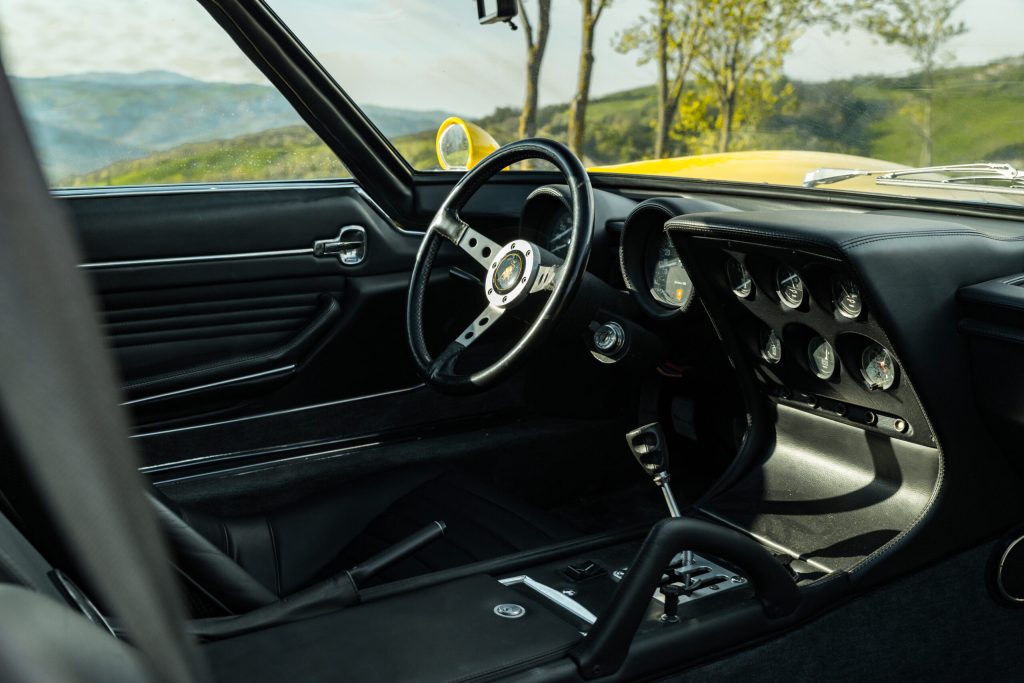
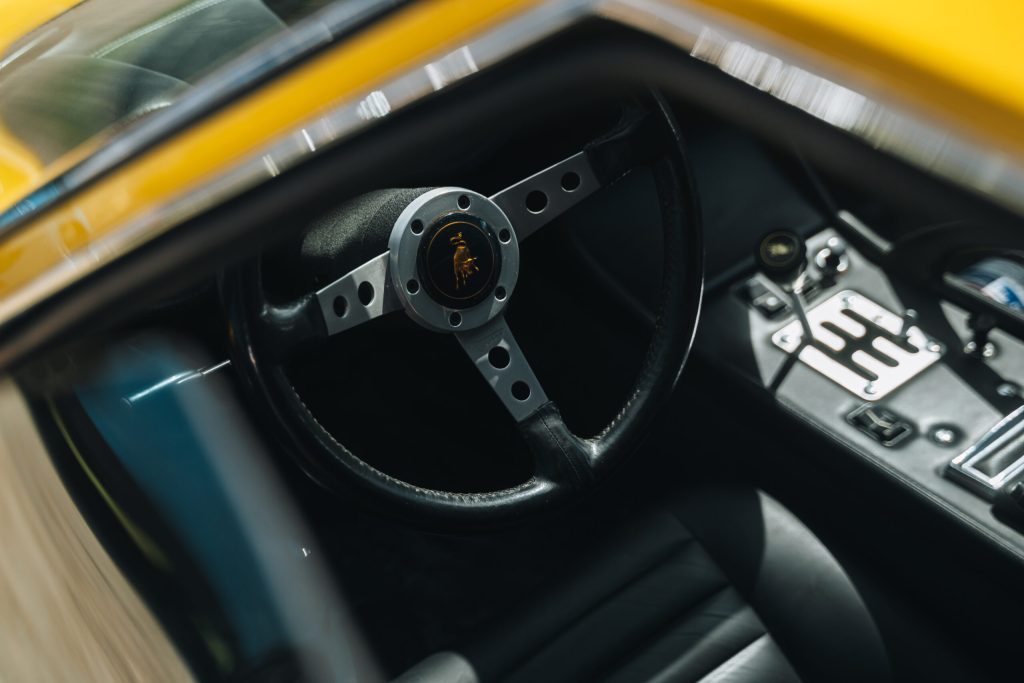
Aside from this minor niggle, the Miura could not be more marvelous. The slightly splayed-leg, long-armed driving position suits those who are short in stature like me. Though the attitude will hinder taller drivers, the visibility through the panoramic windscreen is superb, making it easy to accurately position the car, even without the benefit of a passenger-side mirror.
The steering, which is a little heavy at parking speeds, lightens with velocity to a point that’s almost dainty. The whole car feels much more fleet of foot than I imagined given the mass of V-12 behind the seats. There’s no red line on the tachometer, but 7000 rpm seems to be the gear-change sweet spot—it’s just below peak power, but revving higher feels wrong, especially since a mis-shift would be catastrophic.
Yet that’s never likely. The glorious, gated transmission is a conventional H-pattern and, while a tad slower to shift than a modern manual, it’s positive and accurate. With every change, there’s the immense satisfaction of the “click-clack” sound of metal on metal.
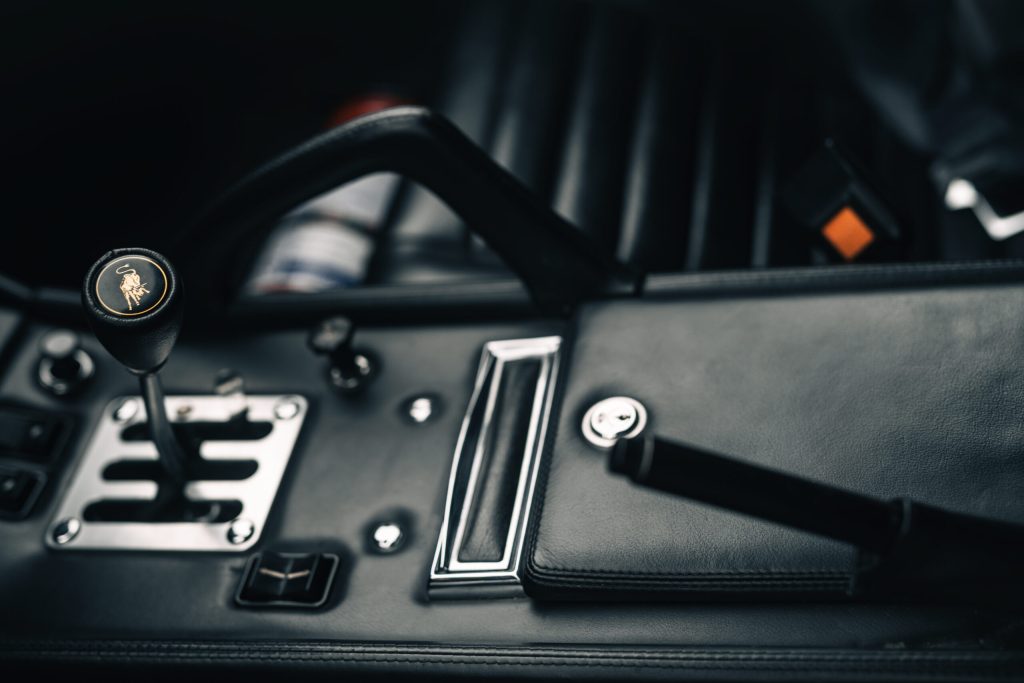
Heading down from the historic hilltop Castello delle Carpinete, following the meandering flow of the Fiume Secchia river, the Via San Pietro delivers a heady mix of tight turns and fast, open corners. The Miura devours it all. Even the occasional scrappy surface doesn’t trouble the car’s ride.
I may not be able to gauge my speed accurately, but the SV’s quoted sub-seven-second 0–60mph time is quite believable. There’s an urgency to its acceleration that feels real-world right, and, unlike the preposterous performance of the brand’s current line-up, one can really exploit its grunt on the road.
Exploit it I do. The truth is, had I not been in a convoy of other Lamborghinis, new and old, and with an intense pace set by a pair of Urus SUVs, I would probably never have dared to drive this car so swiftly. And if I hadn’t, then I would never have appreciated quite what an achievement the Miura really was.
No wonder the writers of the 1960s had to come up with a new name for it.














